Our family loves coding. My college major was computer science. My husband works in IT and taught our older kids to create web pages. I was excited to have the opportunity to review a book from Code for Teens. It would teach my youngest daughter to program using JavaScript. When she saw samples of the book online, she shared my excitement.
We could hardly wait for the book Code For Teens: The Awesome Beginner’s Guide to Programming (Volume I) to arrive. We were anxious to get started.
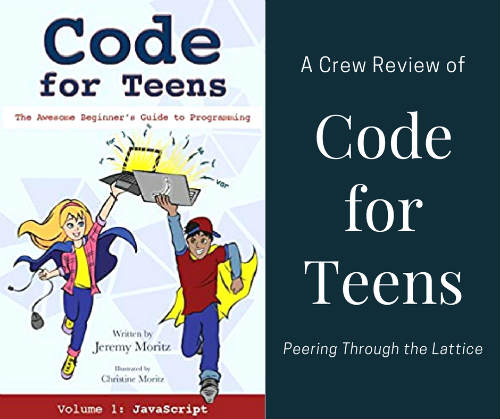
Getting Started
With bated breath, I slid the first Code for Teens book out of its envelope. Delighted to have it in hand, I wasted no time in sitting down to read the introduction.
It was even better than I had expected. Glossy pages, colorful illustrations, and engaging, humor-filled writing captured my interest. I knew my daughter would appreciate the book. She enjoyed reading the introduction the following day.

When I headed out to jury duty a couple days later, the book was almost forgotten. A reminder or two was all it took for my daughter to sit down with the book once more.
Our summer has been very busy, so progress through the book has been pretty slow. I was hoping my daughter could tackle a chapter each week. Life happens, though. Neighbor kids knock on the door asking to play. Mom is called upon to fulfill her civic duty. Extended family members visit. We hit the road for a family trip. The swimming pool beckons…
Summer should include lots of fun downtime. I am glad to allow my daughter to work through the book at a slower pace than I might require during the school year. The author recommends spending twenty minutes each day working through the book. My aspiring programmer advances her JavaScript skills only a couple days a week.
What’s in a Chapter?
Each chapter explains coding concepts and provides plenty of opportunities to practice them. Lighthearted “dad jokes” and colorful illustrations make the book fun to read. As my daughter read through the chapter, she paused often to type sample code into her computer.
Code for Teens, Volume 1, introduces concepts used in most programming languages. Explanations are clear and simple—easy for kids ages ten and up to understand.

Following each chapter is a short quiz. My daughter used Google Docs to create a “worksheet” for her answers. We compared her responses to those at the back of the book.
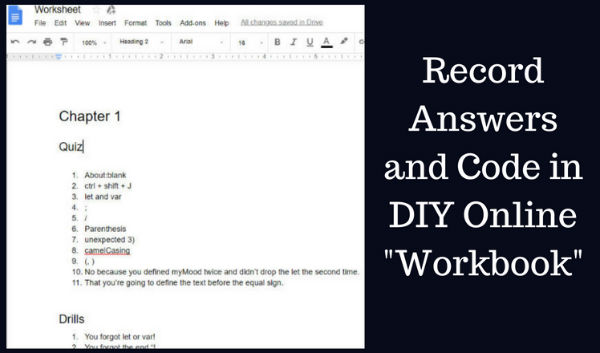
After completing the first quiz, she worked through a set of drills. She typed a list of valid code snippets into the computer to see what would happen. Next, she tried typing in code snippets with errors to determine what was wrong with them. In her “worksheet” file, she explained what each mistake was.
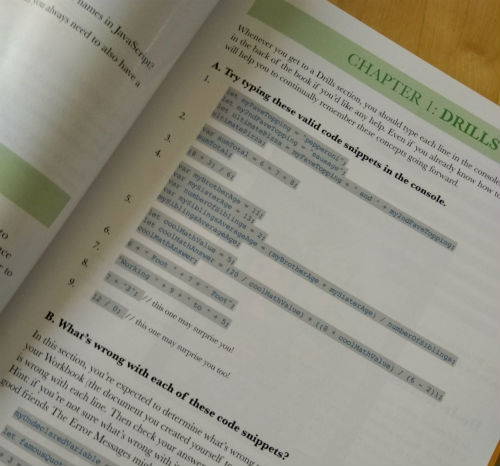
After completing the quiz and drills, my daughter was ready to tackle a DIY coding project. The first project required her to create code to determine the average age of her family members. After running the code, she added it to her “worksheet.”
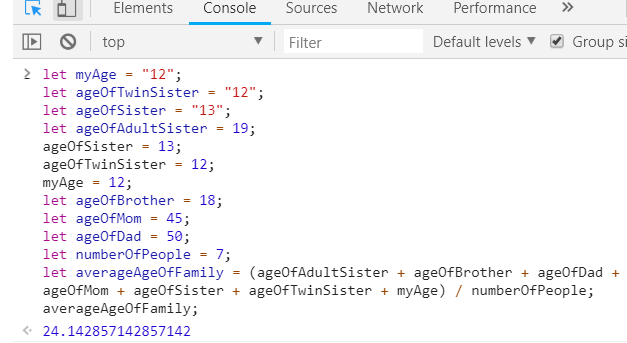
“The DIY projects are so easy that it almost feels like cheating.”
Subsequent chapters follow up the DIY project with an aggregate review section. These cumulative review questions help cement concepts students have already learned.
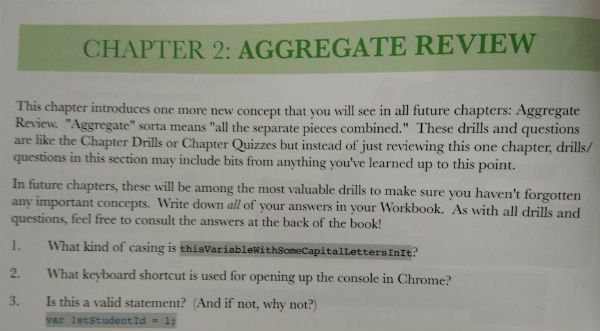
My Daughter’s Opinion
My twelve-year-old coder could find nothing negative to say about Code for Teens. She truly likes everything about the book.
“It was so fun that even my twin sister said that it looked cool!”
She enjoys it so much that she thinks all of her siblings should work through the book. That would include:
- her expert coder brother, who is currently studying Artificial Intelligence
- her oldest sister, who loves to draw, write, and organize information in databases
- our middle girl, who favors cell phones over computers any day and wants no part of coding
- her twin, who thinks she is no good at coding even though she excels at debugging (finding errors in code).
“It is really easy to follow along. It has very clear instructions.”
The book tackles important coding concepts which challenge many adults. Yet it is written simply enough to make it seem easy. The skills and concepts throughout the book build upon each other incrementally.

My daughter enjoys writing her own code. She has become comfortable using the web browser console when programming.
“It’s really fun to talk to the JavaScript interpreter on the computer.”
JavaScript First?
One of the best things about JavaScript is the simplicity of running the code. Many programming languages require special software. All you need to run JavaScript is built into the Chrome web browser.
JavaScript is a terrific first programming language that is widely used in web design. I am thrilled that my daughter wants to learn such a useful skill. She can use it as a springboard to develop fun, interactive web pages or to learn other programming languages in the future.
Last summer the twins took a web design class which barely touched on JavaScript. The brief treatment of the topic whetted one twins’ appetite to learn more. The other became frustrated because the topic lacked a proper foundation. I love the way Code for Teens starts with actual programming in JavaScript.
Volume 2 will address creating web pages using HTML and CSS. Even though my daughter already learned some web design skills, she thinks she will enjoy it. I can’t wait to explore more books in the Code for Teens series!
